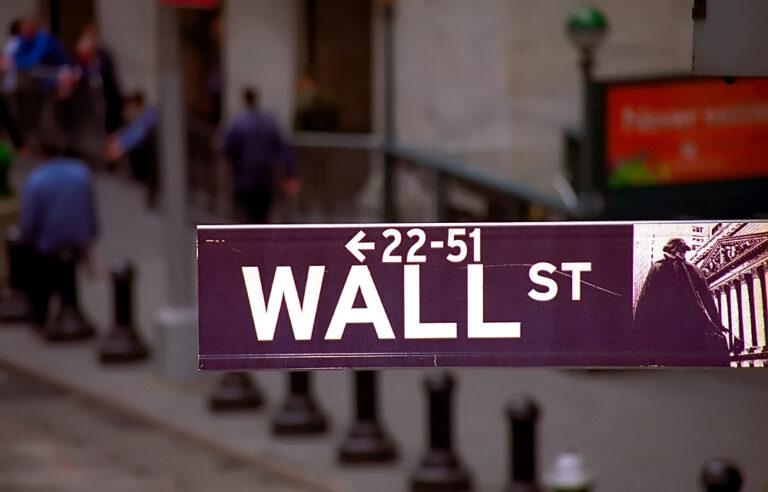On Tuesday, Mike Novogtraz, the founder and CEO of Galaxy Digital Capital Management, talked about the future of cryptocurrencies at the Bloomberg Invest New York Summit. Here are the key takeaways from Mike’s interview with Erik Schatzker:
- We are still in the early stages of the crypto revolution, which he calls “Internet 3.0”; he believes that 15 years from now, we will look back and see how the blockchain has changed so many things.
- Ethereum, which is one of the main leaders in the crypto space, is only three years old. If you think of the current market as a three-year-old child, it’s unreasonable to expect it to have the maturity of a PhD student.
- Within the next 15 years, almost every database will be implemented as a blockchain. As he says, some of them may be private blockchains, but the point is that this move to blockchain technology will happen because “it’s a more effective way of organizing data.”
- For the last couple of years, around 98% of the money moving into the crypto market came from retail investors, and institutional investors were not really involved. You didnt need to understand “tokenomics”. People were just buying into the hype — it was pure FoMO. And according to Mike, the height of the nonsense, or “peak nonsense” as he calls it, was when celebrities like Paris Hilton started endorsing ICOs (LydianCoin). So, the market went way up, and unsurprisingly, it crashed.
- For the next leg of the market, you have to understand how tokens work if you want to make money, and not just simply invest in every ICO.
- Although most of the existing blockchains are not fast enough yet, there are many young and talented computer scientists all over the world working on scaling solutions, and so he is confident that the scaling problem will get solved soon.
- He is very bullish on EOS; says it will be the “first fast blockchain.”
- He sees the best use case for cryptocurrencies not as replacements for fiat currency since he thinks that governments will not want to lose control and regulators will try to prevent this from happening. Instead, he is most excited about the idea of new projects coming during the next few years that disrupt centralized intermediated businesses such as Uber and Airbnb. As an example, he wants us to imagine a decentralized version of Uber; let’s call it “Duber”. How would we go about building something like this? We do an ICO and raise around $30 million. We choose the Ethereum or the EOS blockchain. We build a matching system. We do some advertising. We give riders some tokens. Each token represents the future sale of a ride. You won’t be paying in tokens in your mind. Maybe first ride will cost you $8 (one token). As more and more people want to ride, riders and drivers will probably want to hoard tokens, behaving like speculators. There will be a fixed supply of tokens. These tokens will feel like equities. Drivers get paid in tokens. Why does it work? Because both the driver and rider will feel like owners. “Everyone in system has a vested interest to get more people into the system.”
- Institutions are slowly marching towards acceptance, and there are four things that are making this happen.
- First, we have the development of new crypto indexes (such as the recently announced “Bloomberg Galaxy Crypto Index”). We have to remember that history teaches us that usually indexes act as invitations for institutions to come and play. For example, consider what happened after the “S&P 500 Index” arrived in 1962, or after Goldman launched the “Goldman Sachs Commodity Index” in 1992.
- Second, institutions need the safety net provided by big name custodian firms, and although a few have been announced recently, it would still help if established custody players like “State Street” moved into this space. From the conversations Mike has had recently, he believes that quite a few established players are currently looking at how to get into the crypto space.
- Third, as far as regulatory overhang issue, Mike is not too worried that this will last long because he doesn’t believe that regulators such as the SEC want to stifle innovation, and that they just want to protect the retail investors from fraud and market manipulation. He says that he is willing to bet that they “will say Ethereum was probably a security, but it’s not anymore.” But he won’t be surprised if they go after some ICOs.
- Fourth, he thinks that the same FoMO that brought in the retail investors, will gradually bring in the institutional investors.
- As far as how to decide what crypto projects to invest in, he says: “For a token to work, it’s going to need to have participants. And so, we’ll go long the ones we think are going to be able to build communities, and short the ones we think will not be able to build communities.”
- Finally, to those who think we are in a crypto bubble, he says that the total crypto market was worth around $1.2 trillion back in January 2018. Once the institutional investors start getting really involved, then that $1.2 trillion will look like a small number, and he won’t be surprised to see the crypto market to reach ((but not very quickly) a valuation of around $20 trillion.
Video of the full interview is available on the Bloomberg website.
Featured Image Credit: “New York – 'Wall Street'” by “David Ohmer” via Flickr; licensed under “CC BY 2.0”









